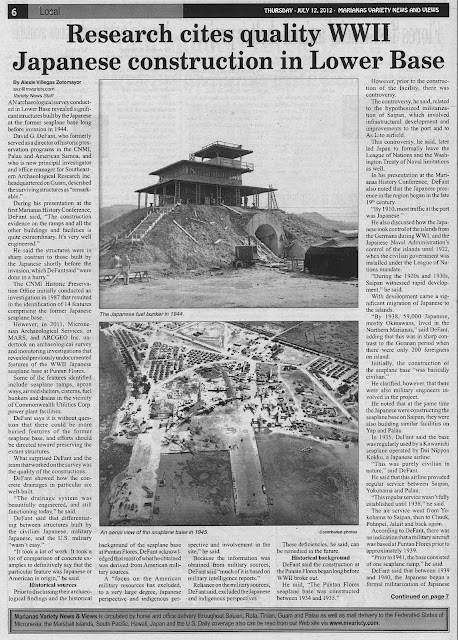Posts
Showing posts from February, 2013
Taiwanese anthropologist examining House of Taga burial remains
- Get link
- X
- Other Apps
From the archives: Research cites quality WWII Japanese construction
- Get link
- X
- Other Apps
From the archives: Saipan airport exhibit details evolution of As Lito airfield
- Get link
- X
- Other Apps
US Treasury official touts SSBCI program in CNMI
- Get link
- X
- Other Apps


